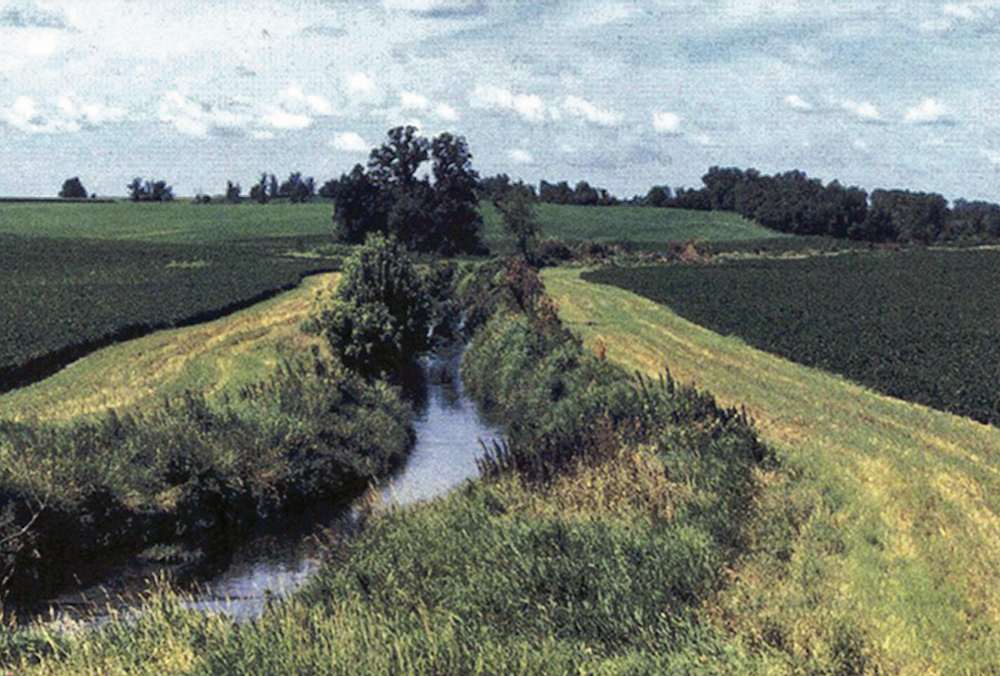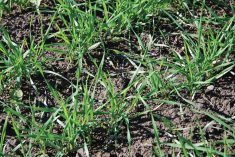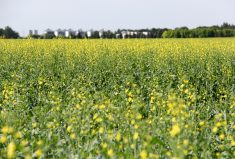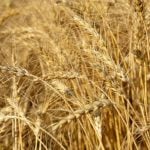Brandon University environmental science researcher Alex Koiter is a fan of riparian areas for a lot of reasons.
They help prevent stream bank erosion. They’re hot spots for biodiversity and provide corridors for wildlife to move. They have a role in flood management.
But if agriculture is looking for a solution on nutrient run-off, he says the industry should look further afield.
“I think the nice thing about riparian areas is it might be kind of easy. It’s maybe a bit of an easy solution, especially from a regulatory body,” he said.
Read Also
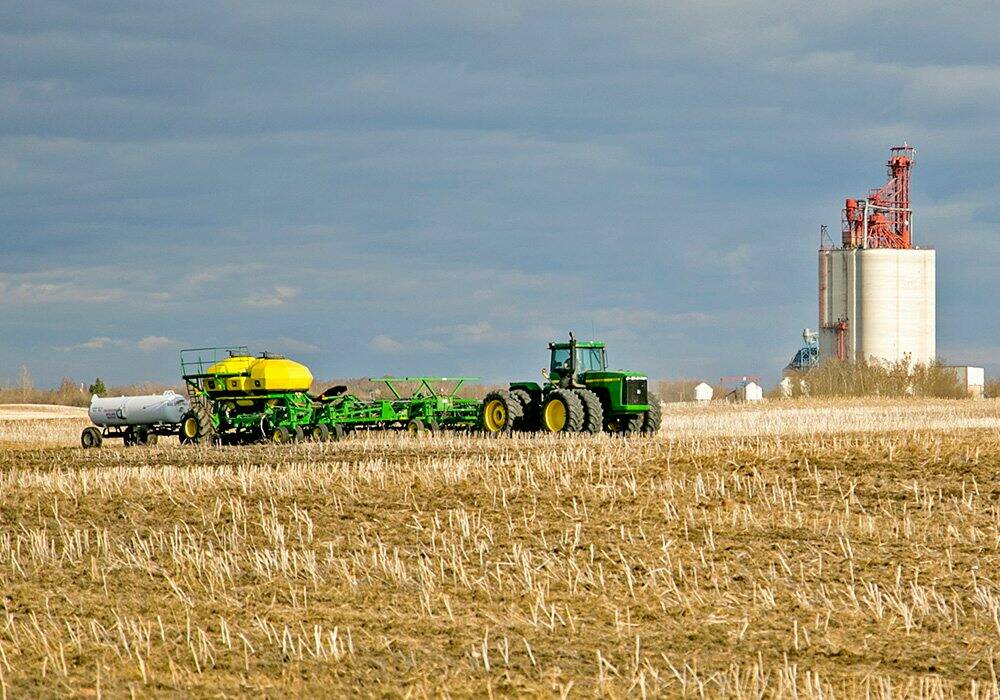
Better data on fertilizer emissions with the Internet of Things
Web of soil sensors looks for live insights on farm greenhouse gas emissions and nitrogen fertilizer application.
Instituting a minimum riparian buffer, for example, would seem comparatively clean cut on paper, he noted.
“I think there’s perhaps a desire to have that kind of silver bullet and riparian areas from a water quality perspective are just often not that,” he said.
Why it matters: Riparian areas are an important tool for land and water management, but a Brandon researcher says they aren’t a one-stop shop when it comes to nutrients in the province’s water.
The ability of those areas to filter nutrients is far from ideal at the times farmers most need it, Koiter said. About 60 to 80 per cent of the year’s run-off happens in April and May with the spring melt, he said, while ground at that time of year has little ability to infiltrate water, and plants are not yet out of winter dormancy to take up nutrients.
At the same time, there is not uniform water flow in the field. In the real world, low points across the landscape mean that water flows off the field in concentrated streams. Only one to two per cent of vegetation at the field edge might actually come in contact with that water and have the opportunity to filter, he said.
There’s also a function of diminishing returns over time, according to Koiter.

He pointed to 2019 research that tracked accumulation of sediment and nutrients in a field with tillage erosion. The study found accumulation of phosphorus at the field edge and into the riparian areas.
At first blush, Koiter said, that might be seen as a good thing, with the riparian area successfully holding back those nutrients. The accumulation, however, is a symptom of a building problem when it comes to the long-term capacity of that area for filtering.
Riparian areas have a finite ability to store those nutrients, Koiter said, and with high concentrations flowing in from the field, will eventually reach a saturation point, unless that biomass is removed such as through forage for livestock.
Riparian areas should therefore be the last defence against leaching nutrients, he argued, while upstream management — such as in-field practice to prevent leaching in the first place — should take the lead.
Another view
Agriculture and Agri-Food Canada researcher Henry Wilson is a soil and riparian area expert with Living Labs Eastern Prairie. The program runs landowner-driven applied research projects in four sub-watersheds of Manitoba.
Riparian areas take a starring role in some of the team’s water retention and treatment projects, such as one project testing methods to control and treat tile drainage run-off to preserve water quality downstream.
Despite that, Wilson said he is generally on the “same page” as Koiter.
Like the Brandon researcher, Wilson urged producers to start with in-field management strategies, rather than trying to recover nutrients once they’ve already been washed away.
“It’s like any downstream treatment like a retention pond or a buffer or riparian areas,” he said. “I think the message of what we’re finding is that it’s rare that they can be effective alone.”
Wilson has also run his own experiments on riparian area nutrient retention. Those experiments took place during spring melt, he said, and looked at retention both in treed and grassy riparian zones located downstream of crop production.
Upstream of the riparian areas, his team released a pulse of phosphorus, nitrogen and a non-reactive salt to help compare samples taken before and downstream of the potential filter.
“If less of the nutrients get through, but the salt is the same, then there’s some retention happening,” he explained.
Sediment testing revealed that there was potential for riparian areas to hold back phosphorus, he said, as long as that soil did not have high concentrations already.
But since samples were taken while plants were still dormant, Wilson suggested retention may be more about absorption and chemistry, with phosphorus getting tied up by things like calcium, than biological process.
“Sometimes that’s a piece that gets overlooked,” he said. “There’s a big part of it that is sort of on the abiotic, the non-living, side of things with the soil chemistry.”
Tests were replicated later in summer, to similar effect.
Translating that to the field, he said, it might imply that planning management for a given site might need heavier emphasis on that site’s traits.
Haying?
There is potential to harvest biomass off saturated riparian areas and open up retention capacity, Wilson noted, although he earmarked that for areas being transitioned back into a riparian zone or is already taken up by quick-growth vegetation.
“I think where we have to be careful is that we aren’t so focused in on nutrients that we forget about the other benefits of having an intact older-growth forest in a riparian area,” he said.
“I don’t think that we would advocate clearing an area that’s really important for biodiversity or carbon sequestration or that kind of thing,” he added. “There’s going to have to be some legacy phosphorus being released over time that we’re just going to have to accept.”
In those cases, Wilson said, there may need to be more emphasis of upstream management and adjusted expectations on how long those management changes take before there is less nutrient load downstream.
A laser focus on phosphorus also misses part of the story, he said. Nitrogen is another part of the conversation.
Wilson’s riparian area experiments found that there was more biological mechanisms in play for nitrogen, with more potential for retention during summer rainfall events.
That plays into their choice of projects with Living Labs, he said, given the integration of tile drainage.
“Tile tends to have more of a nitrate contribution, at least that’s what we’ve seen in the Midwest and I think we’re starting to see some of this as we get data in Manitoba,” he said.
Likewise, he noted, tile drainage does not tend to flow until later in the year, when there is some biological activity.
Systems based
Koiter would still like to see more riparian areas in agro-Manitoba, even if they do not provide the kind of answer to water quality that many land and water management specialists have hoped.
Nutrient management and water quality is only one aspect of riparian area health, he noted. There are metrics like wildlife prevalence, plant and insect biodiversity, infiltration and biomass.
“They definitely can be — and I want to stress — a part of the solution,” he said. “They’re not necessarily the solution, but they’re part of the solution.”


